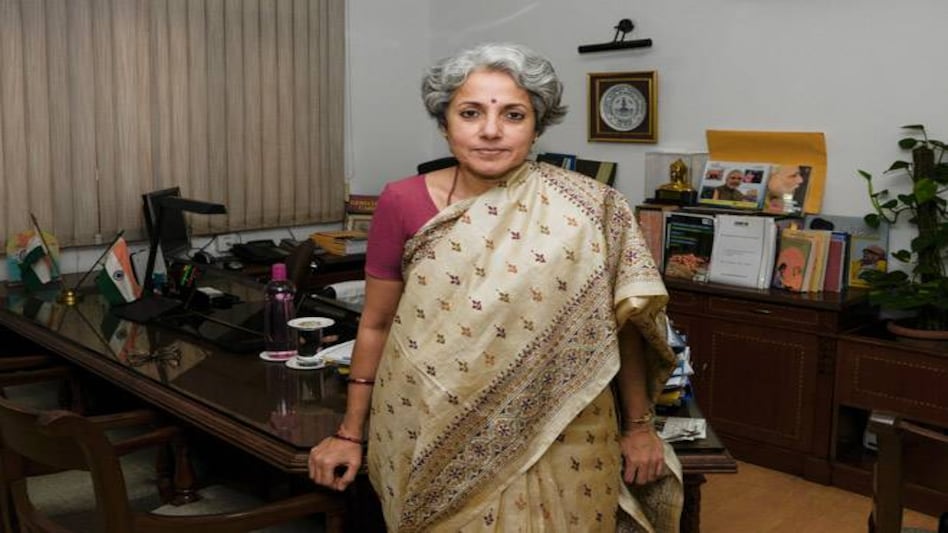 WHO chief scientist Dr Soumya Swaminathan
WHO chief scientist Dr Soumya Swaminathan WHO chief scientist Dr Soumya Swaminathan
WHO chief scientist Dr Soumya SwaminathanDr Soumya Swaminathan, Chief Scientist at the World Health Organisation (WHO), is arguably best placed to advise on how things stand and what India should be focusing on now. Having seen India closely, as the former director general of the Indian Council of Medical Research (ICMR) between 2015 and 2017, she is aware of the challenges that India faces, including that of the practical difficulty of ensuring social distancing in a country where many in poor households share the same roof and even bathroom. Her solution for this is simple.
"People need to understand why certain steps are taken and encouraged to cooperate. Simple measures like washing hands, maintaining personal hygiene and not spitting in public places can go a long way," Swaminathan said during a telephonic interview with Business Today
ALSO READ: Coronavirus crisis: Spain's Princess Maria Teresa first royal to die from COVID-19
She feels India should use this opportunity to strengthen its primary healthcare system. Talking about her latest concern, Swaminathan says, "The risk now is around the reports in media on the mass migration of people, millions of them apparently, back to rural areas from the cities. This means testing will have to be ramped up in rural areas also."
Swaminathan has been particularly excited about WHO's 'Solidarity Project' aimed at ramping up clinical trials for coronavirus drugs. "This virus does not respect age, gender, social status or nationality. We have to fight it United."
Excerpts from the interview:
How do you see things in India?
Many countries are facing problems, be it India or Europe or any other part of the world. Various countries are facing challenges in their own way. We all definitely have a huge challenge before us. Typically, this calls for a co-ordinated strategic response plan that encompasses a short-term, medium-term and long term response. Now that a lockdown has been enforced, what is needed is focus on testing and everything that follows testing, in terms of isolating the infected person, providing treatment, and quarantining the people the infected person came in contact with.
ALSO READ: Coronavirus vaccine: Zydus, Serum Institute among 43 global firms in race
Based on your reading of data from India, what do you see as the way forward and the key concern now?
Even when the lockdown is eventually lifted, certain community interventions will need to be put in place because you need to ensure some amount of physical distancing (not social distancing) such as banning of mass gatherings. This again has to be based on data. My reading of the Indian data is that most of the cases have occurred in cities. The risk now is around the reports in media on the mass migration of people, millions of them apparently, back to rural areas from the cities. This means testing will have to be ramped up in rural areas also. The good thing is that there are different platforms and diagnostics tests becoming available and testing capacity being rapidly ramped up.
Medical experts tell us that we will need large number of PPEs, as many as 2.4 crore PPEs by some estimates, and we are only now reaching out to manufacturers to make them and there are only four kits approved with some first time kit-makers. Also, many private testing labs are not having enough stock of kits and we are told if the lockdown time is not optimally used for testing, it could complicate matters. So, what do we do?
What journalists can do is to report reality from the ground. I feel the social and economic impact in India, as in other countries, is extremely important to take into account. What is needed is a strategy that will be implemented for the next few months and I believe the Indian government is working on it. We need to balance people's basic needs as well as take care of public health. You have to keep the virus under control. You also have to minimise the difficulties to people, especially the poor and the vulnerable. There are different strategies different countries have used. For instance, in Singapore, China and South Korea, the mainstay was actually testing. Without expanded testing, you will not know where your cases are and you will also not know where the clusters are.
ALSO READ: Coronavirus crisis: Pakistan has over 12,000 suspected cases; positive infections rise to 1,495
So, your emphasis remains on testing?
From the beginning, WHO has said we need targeted approaches based on the stage of the epidemic and local situation. The national lockdown should be accompanied and followed by data-driven approaches and the only way for that is to ramp up testing. It goes back to what the director general of WHO, Dr Tedros Adhanom Ghebreyesus said in one of his press conferences that you cannot put out a fire blindfolded.
How important is communication and what is your advice to governments on communication?
I have often said that communication is critical at such times and the public must know what is happening. So greater the communication, the better. People need to understand why certain steps are taken and (should be) encouraged to co-operate. Simple measures like washing hands, maintaining personal hygiene and not spitting in public places can go a long way. We should use this opportunity to strengthen our primary healthcare system.
Finally, it is important to avoid stigmatising individuals and families with COVID infection. Instead, we should support them and ensure their recovery. This virus does not respect age, gender, social status or nationality. We have to fight it united.
ALSO READ: Coronavirus: No lockdown in New York; US death count crosses 2,000